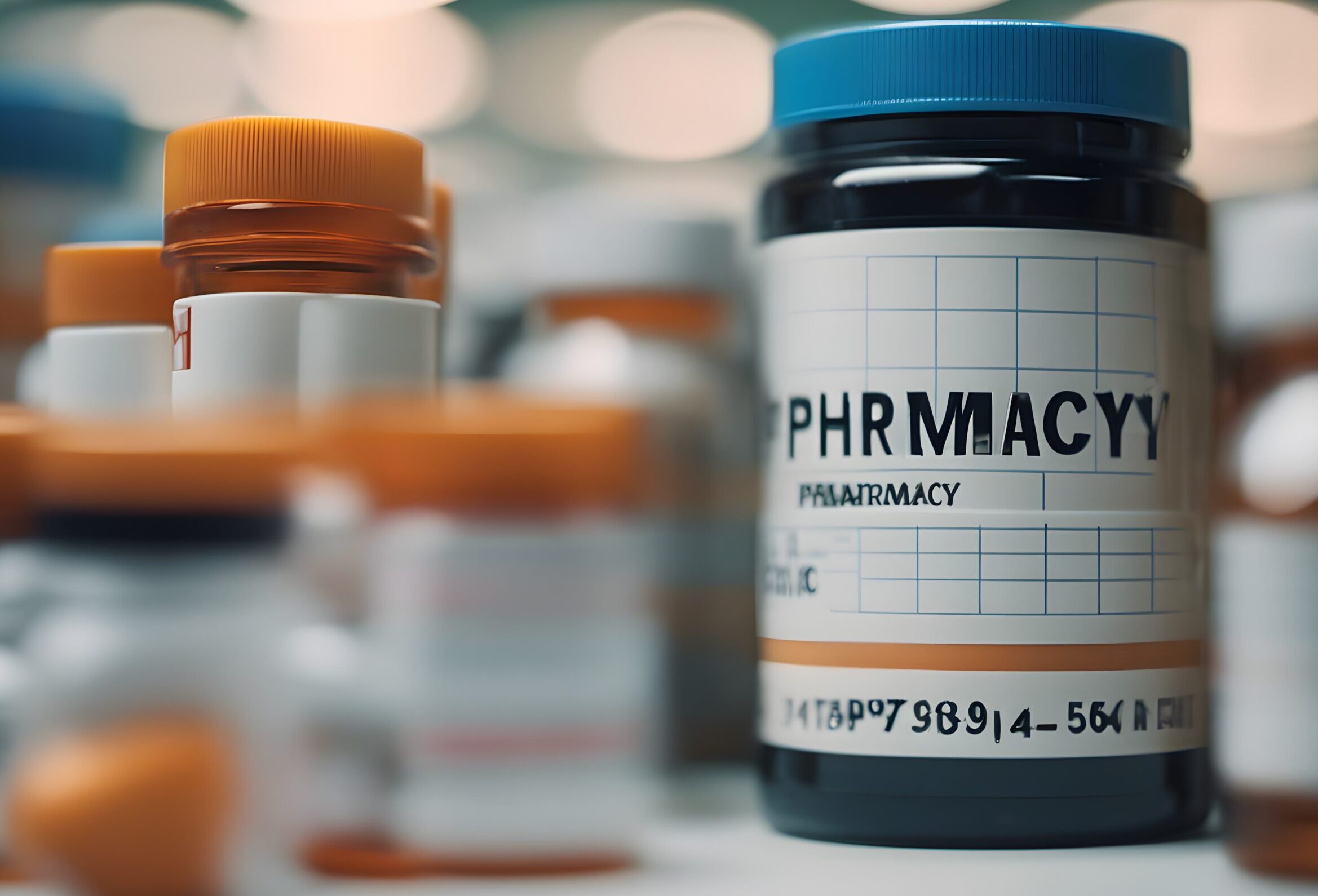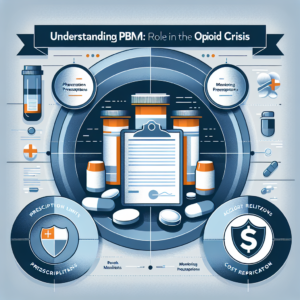The opioid crisis continues to devastate communities across the United States, with the number of deaths linked to opioid overdoses surpassing 500,000 in the past two decades. In the latest shocking development, investigations have revealed that secret financial arrangements between pharmaceutical companies and pharmacy benefit managers (PBMs)—the intermediaries between insurers, pharmacies, and drug manufacturers—have played a major role in exacerbating this public health emergency.
These hidden financial transactions, often masked as “kickbacks” or “performance bonuses,” have influenced the over-prescription of opioids, delaying efforts to combat addiction and prevent overdose deaths. This article delves into how these payments have worsened the opioid epidemic, the role of PBMs, the ethical concerns surrounding these practices, and what can be done to hold those responsible accountable.
Understanding Pharmacy Benefit Managers (PBMs)
Pharmacy Benefit Managers (PBMs) are key players in the pharmaceutical supply chain, acting as intermediaries between insurance companies, pharmacies, and drug manufacturers. Their primary role is to negotiate drug prices, create formularies (lists of approved medications), and manage prescription drug benefits for insurance plans. PBMs are meant to ensure that patients receive the most cost-effective and medically appropriate medications.
At first glance, PBMs appear to be a helpful presence in the healthcare system, working to control drug costs for insurance companies and patients alike. However, over time, their increasing involvement in the decision-making process of which drugs should be covered and reimbursed has raised significant concerns. The opioid crisis has brought these concerns into sharp focus, as the business practices of PBMs have come under scrutiny for enabling the widespread availability of highly addictive painkillers.
The Role of PBMs in the Opioid Crisis
While PBMs were originally designed to help manage prescription drug costs and promote better treatment options, their influence over the opioid market has become problematic. Evidence has emerged that pharmaceutical companies, particularly opioid manufacturers, have made secret payments to PBMs to encourage the inclusion of opioids on insurance formularies.
These hidden financial transactions, often disguised as rebates, bonuses, or performance incentives, created an incentive for PBMs to favor opioids over other, potentially safer alternatives. As a result, opioids remained readily accessible to doctors and patients, despite growing evidence of their addictive potential. These practices have fueled the opioid crisis by promoting the widespread prescription of these dangerous drugs.
The Secret Payments and Their Impact
Pharmaceutical companies have long faced criticism for aggressively marketing opioids, even when evidence pointed to their addictive nature. However, a more insidious aspect of their influence over the opioid crisis lies in the secret payments made to PBMs. These payments were structured as “market share rebates” or “performance-based bonuses,” with the amount of money paid to PBMs tied to the volume of opioids prescribed within a given period.
In exchange for these payments, PBMs were incentivized to include opioids on formularies, often at the expense of safer pain management drugs. This created a situation where opioids were consistently favored over other treatments that might have been more appropriate for certain patients. For example, doctors were more likely to prescribe opioids because they were readily available through insurance plans, and PBMs made it financially advantageous for pharmaceutical companies to keep opioids on formulary lists.
These financial arrangements were kept hidden from the public and healthcare providers, resulting in a significant conflict of interest. Rather than prioritizing patient health, PBMs were motivated by financial gain, which led to the over-prescription of opioids and an increase in addiction rates. As opioids continued to be dispensed in large quantities, communities across the country suffered from rising rates of opioid use disorder and overdose deaths.
How the System Worked: The Financial Incentives for PBMs
Pharmacy Benefit Managers have long been accused of operating with financial incentives that conflict with their stated mission of providing cost-effective care. In the case of opioids, these incentives became even more pronounced.
When PBMs negotiated contracts with pharmaceutical companies, opioids were often placed at the top of the list, making them easily accessible to patients through their insurance plans. PBMs received rebates or other financial rewards for each opioid prescription filled, meaning that the more opioids were prescribed, the more money PBMs stood to make. This created a perverse incentive where PBMs had a financial stake in maintaining the status quo of opioid availability, even in the face of growing concerns about addiction.
Furthermore, many PBMs operate as subsidiaries of large insurance companies, which gave them even more control over which medications were included in formularies. This consolidation of power allowed PBMs to negotiate better deals with drug manufacturers but also opened the door to potential conflicts of interest. The opioid epidemic, fueled by this system, highlights how the prioritization of profit over patient welfare has led to disastrous consequences.
The Ethical Concerns: Were PBM Payments Legal?
The ethical and legal implications of these secret payments are profound. Many of these payments likely violated anti-kickback statutes, which prohibit financial arrangements intended to influence the prescribing of drugs. Pharmaceutical companies and PBMs have denied wrongdoing, claiming that these rebates were part of legitimate contractual negotiations. However, experts argue that the scale of the opioid crisis demands a deeper investigation into whether these practices were ethical or lawful.
At the heart of this issue is the question of whether the financial incentives given to PBMs played a direct role in exacerbating the opioid epidemic. The growing body of evidence suggests that these payments were not merely incidental; they were a driving force behind the persistent availability and over-prescription of opioids, despite their dangerous side effects.
The Consequences for Public Health
The opioid crisis has claimed more than 500,000 lives in the United States over the past two decades, with the majority of those deaths attributed to opioid overdoses. As opioids became more widely prescribed, addiction rates skyrocketed. Many individuals who were initially prescribed opioids for pain management became dependent on them, leading to a spiral of addiction, crime, and, ultimately, overdose deaths.
The availability of opioids was compounded by the lack of oversight over PBMs. Because PBMs were incentivized to include opioids on formularies, they became one of the primary channels through which these drugs reached patients. This widespread distribution of opioids has been linked to the growing number of individuals who developed opioid use disorder (OUD), a condition that has put enormous strain on healthcare providers, addiction treatment centers, and public health resources.
In rural and underserved areas, where access to healthcare is often limited, the opioid crisis has hit particularly hard. These communities have seen higher rates of opioid addiction and overdose deaths, which have in turn driven up healthcare costs and overwhelmed local emergency services.
Legal and Policy Responses to PBM Practices
The exposure of secret payments between PBMs and opioid manufacturers has prompted legal investigations at both the state and federal levels. Several state attorneys general have launched probes into the legality of these financial arrangements, with some arguing that they violate federal anti-kickback laws.
In addition, lawmakers in Congress have called for greater transparency and accountability in the practices of PBMs. A proposed bill, known as the PBM Transparency Act, would require PBMs to disclose all financial transactions, including rebates and performance bonuses, with pharmaceutical companies. This bill seeks to create a more transparent drug pricing system, where patients and healthcare providers can better understand the financial motivations behind the drugs being prescribed.
Moreover, the Biden administration has voiced support for efforts to reform the PBM system. While reforms are still in the early stages, many experts believe that greater regulation of PBMs will help combat the opioid crisis by limiting the influence of financial incentives on prescribing practices.
The Path to Reform: What Needs to Be Done
While the legal investigations and policy discussions around PBM practices are a step in the right direction, experts argue that more must be done to address the root causes of the opioid crisis. Reforming the system will require a multi-faceted approach, including:
-
Better Regulation of PBMs: Transparency is key to addressing the conflicts of interest within the PBM industry. PBMs must be held accountable for their financial relationships with pharmaceutical companies and be required to disclose all payments received.
-
Promoting Non-Addictive Alternatives: Efforts should focus on expanding access to non-addictive pain management options. Safer alternatives to opioids, such as physical therapy or non-opioid pain relievers, should be prioritized by healthcare providers and insurers.
-
Increased Funding for Addiction Treatment: Addressing the opioid crisis requires more than just regulating PBMs—it demands a comprehensive public health approach. This includes expanding access to addiction treatment centers and mental health services.
-
Public Education Campaigns: Educating the public about the dangers of opioid misuse and the availability of alternative treatments is crucial in reducing the demand for opioids.
The opioid crisis is one of the most pressing public health challenges in the United States, and while efforts to address the issue are ongoing, new revelations about secret payments to PBMs have only added complexity to the situation. These hidden financial arrangements have fueled the over-prescription of opioids, contributing to the addiction epidemic that has claimed hundreds of thousands of lives.
As investigations continue and legal reforms are discussed, it is essential to hold both pharmaceutical companies and PBMs accountable for their role in the crisis. By implementing greater transparency, regulating the financial incentives behind drug prescriptions, and focusing on patient-centered care, the U.S. may finally begin to make headway in combating the opioid epidemic and preventing further loss of life.
Feel free to check out our other website at: aibrainpowered.com













